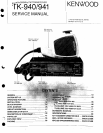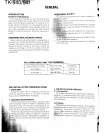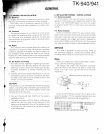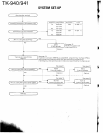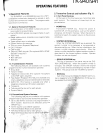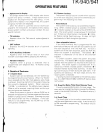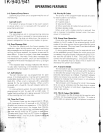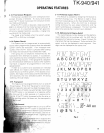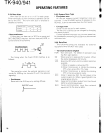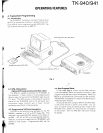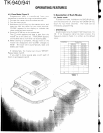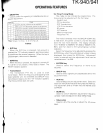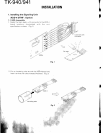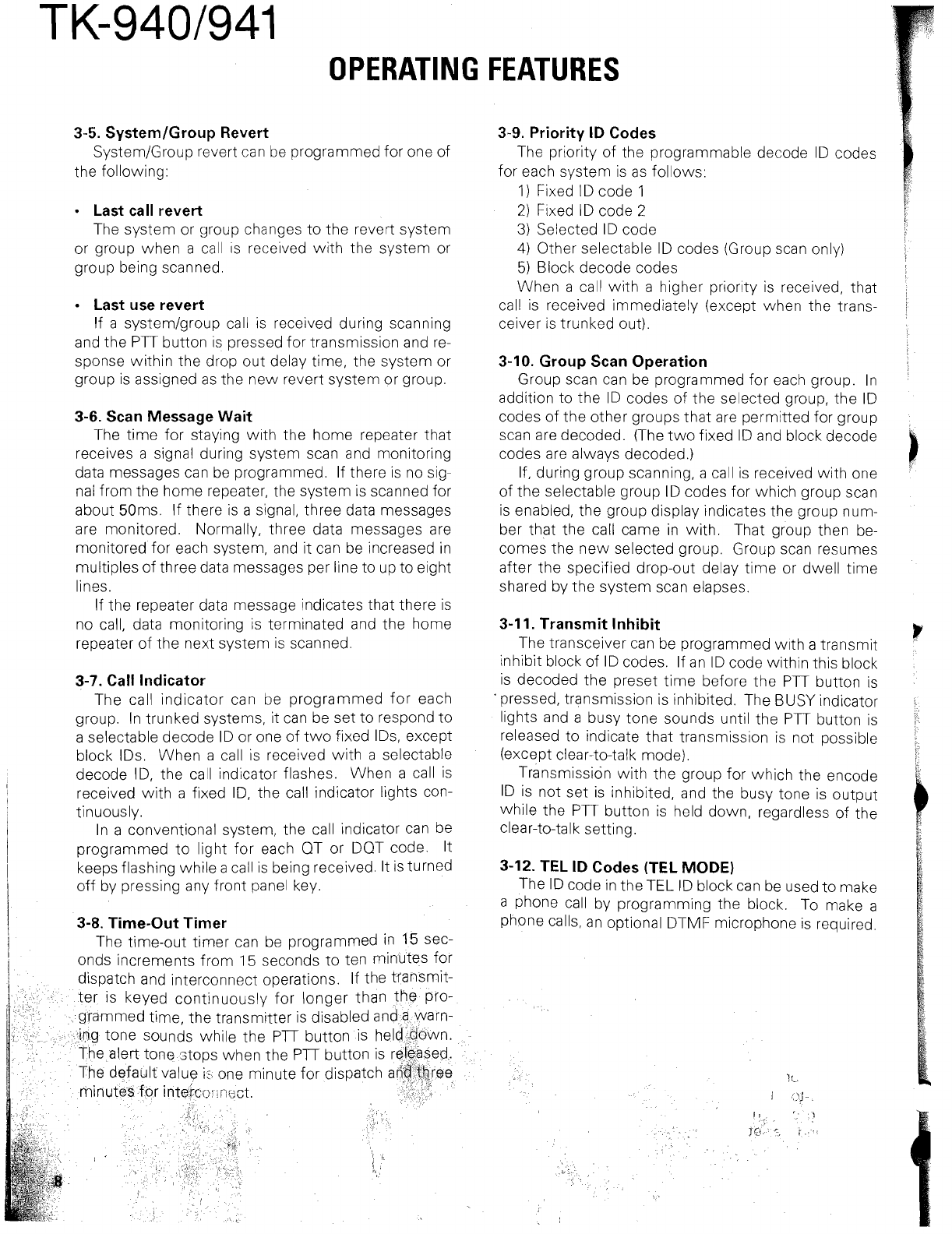
OPERATING FEATURES
3-5. SystemIGroup Revert
SystemIGroup revert can be programmed for one of
the following:
Last call revert
The system or group changes to the revert system
or group when a call
IS
received with the system or
group being scanned.
Last use revert
If a systemlgroup call is received during scanning
and the
PTT
button 1s pressed for transmission and re-
sponse within the drop out delay time, the system or
group is assigned as the new revert system or group.
3-6. Scan Message Wait
The time for staying wlth the home repeater that
receives a signal during system scan and monitoring
data messages can be programmed. If there is no sig-
nal from the home repeater, the system is scanned for
about
50ms. If there is a signal, three data messages
are monitored. Normally, three data messages a re
monitored for each system, and it can be increased in
multiples of three data messages per line to up to eight
lines.
If the repeater data message indicates that there is
no call, data monitoring is terminated and the home
repeater of the next system is scanned.
3-7. Call Indicator
The call lndlcator can be programmed for each
group In trunked systems,
~t
can be set to respond to
a selectable decode ID or one of two
flxed IDS, except
block
IDS When a call
IS
recelved wlth a selectable
decode ID, the
call Indicator flashes When a call 1s
I
recelved wlth a flxed ID, the call lndlcator lights con-
I
1
tinuously.
I
In a convent~onal system, the call
indicator
can be
1
programmed to l~ght for each QT or DQT code
It
!
keeps flashlng while a call
IS
belng recelved
It
IS
turned
off by
presslng any front panel key
3-8. Time-Out Timer
1
The tlme-out timer can be programmed In 15 sec-
I
onds
increments
from
15
seconds to ten mlnutes for
patch and Interconnect operat~ons If the transmlt-
for longer than the pro-
ter
IS
dlsabled and a warn-
PlT
button
IS
held down.
he
PlT
button
IS
released.
ute for
dlspatch and three
3-9. Priority ID Codes
The priority of the programmable decode ID codes
for each system is as follows:
1)
Fixed ID code
1
2)
F~xed ID code
2
3)
Selected ID code
4)
Other selectable ID codes (Group scan only)
5)
Block decode codes
When a
call with a higher priority is received, that
call is received immediately (except when the trans-
ceiver is trunked out).
3-10. Group Scan Operation
Group scan can be programmed for each group. In
addition to the ID codes of the selected group, the ID
codes of the other groups that are permitted for group
scan are decoded. (The two fixed ID and block decode
codes are always decoded.)
If, during group scanning, a
call is recelved with one
of the selectable group ID codes for which group scan
is enabled, the group display indicates the group num-
ber that the call came in with. That group then be-
comes the new selected group. Group scan resumes
after the specified drop-out delay time or dwell time
shared by the system scan elapses.
3-1 1. Transmit Inhibit
The transceiver can be programmed wlth a transmit
inhibit block of ID codes. If an ID code within this block
is decoded the preset time before the
PTT
button is
'pressed, transmission is inhibited. The BUSY indicator
lights and a busy tone sounds until the
PTT
button is
released to indicate that transmission is not possible
(except clear-to-talk mode).
Transmission with the group for which the encode
ID is not set is inhibited, and the busy tone is output
while the
PTT
button is held down, regardless of the
clear-to-talk setting.
3-12. TEL ID Codes (TEL MODE)
The ID code in the TEL ID block can be used to make
a phone call by programming the block. To make a
phone calls, an optional DTMF microphone is required.



